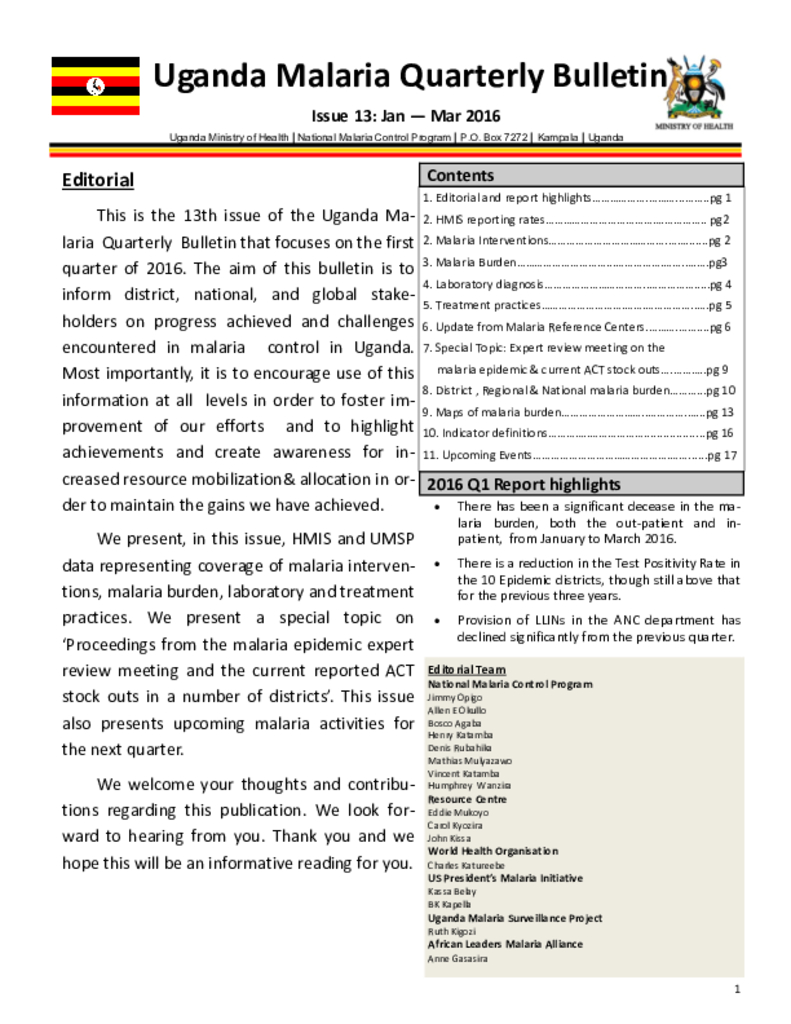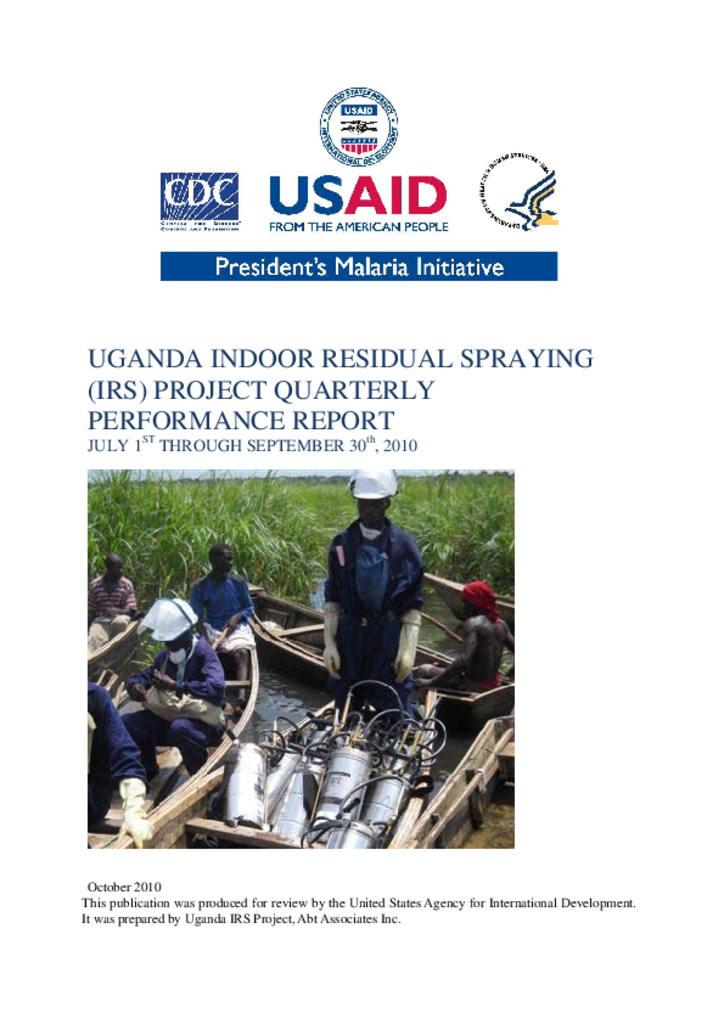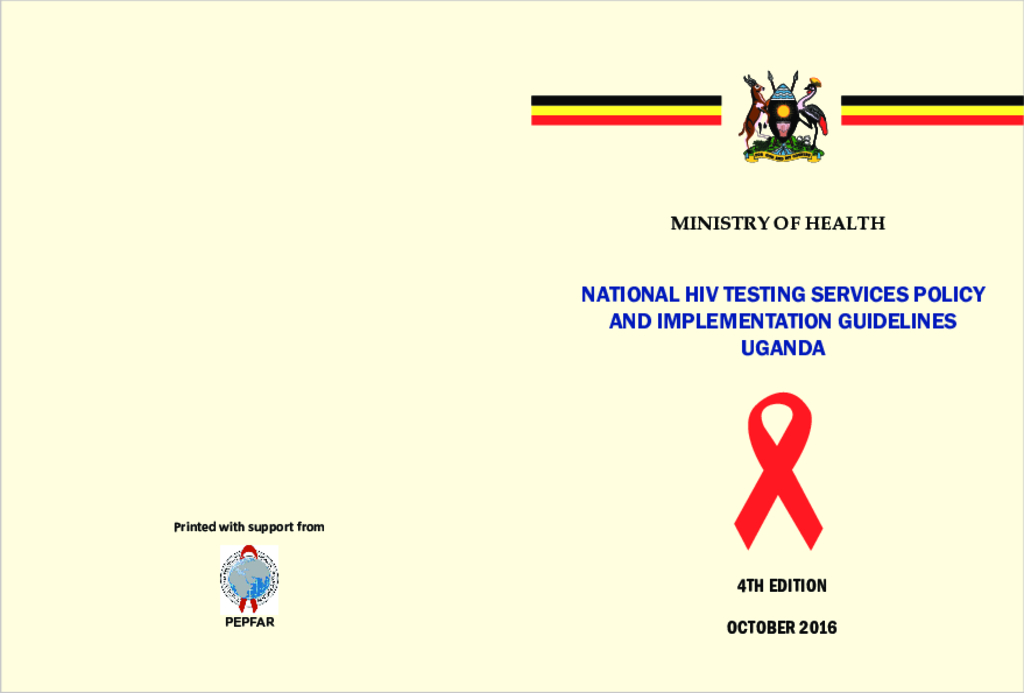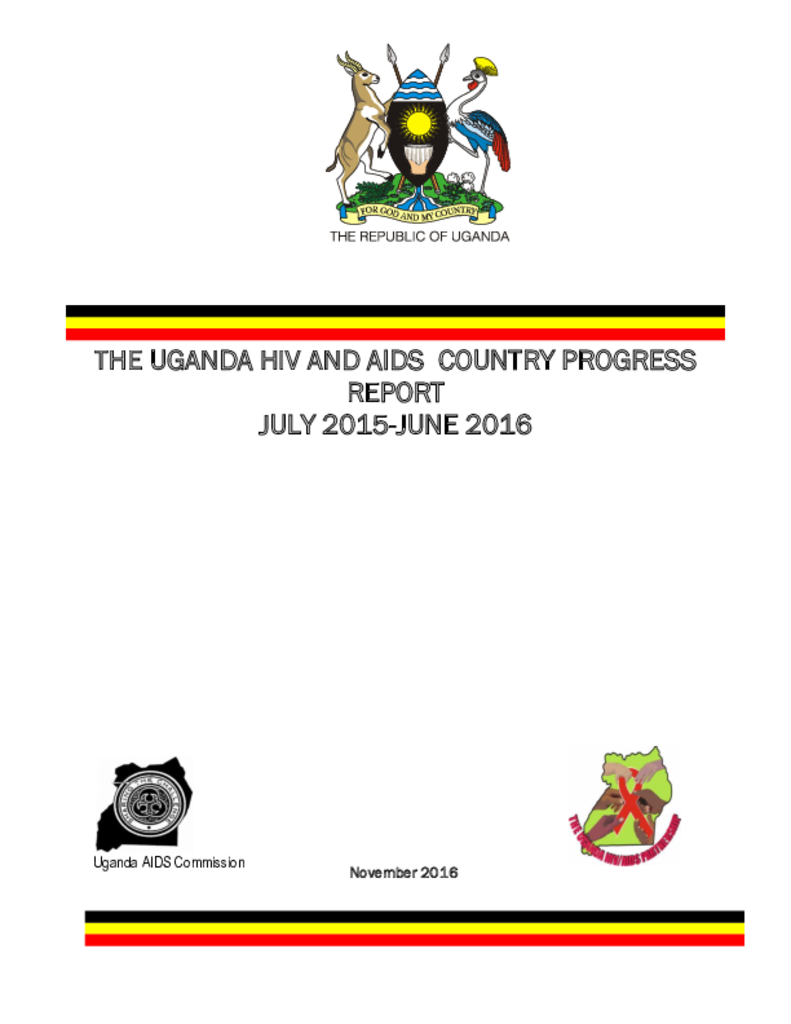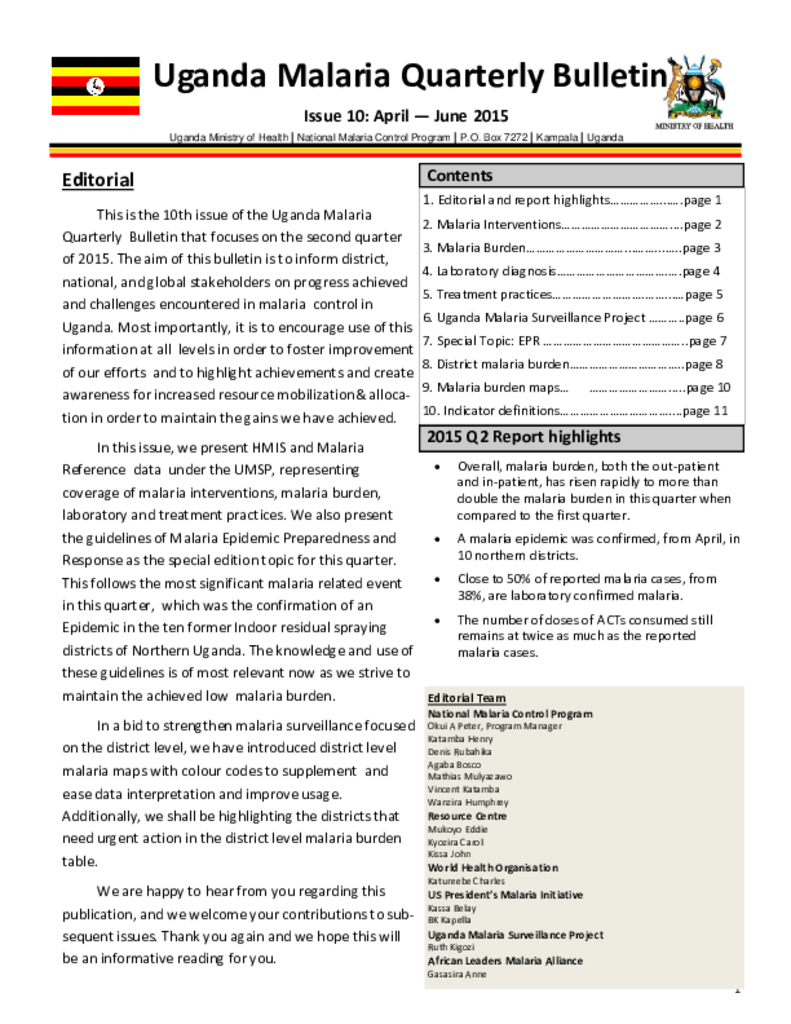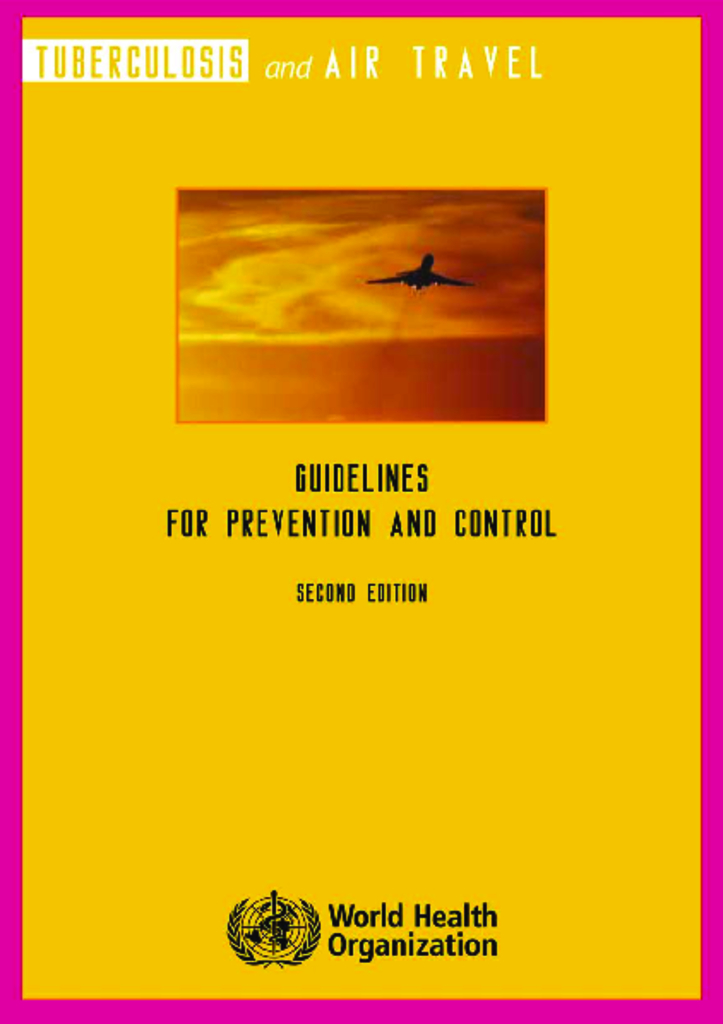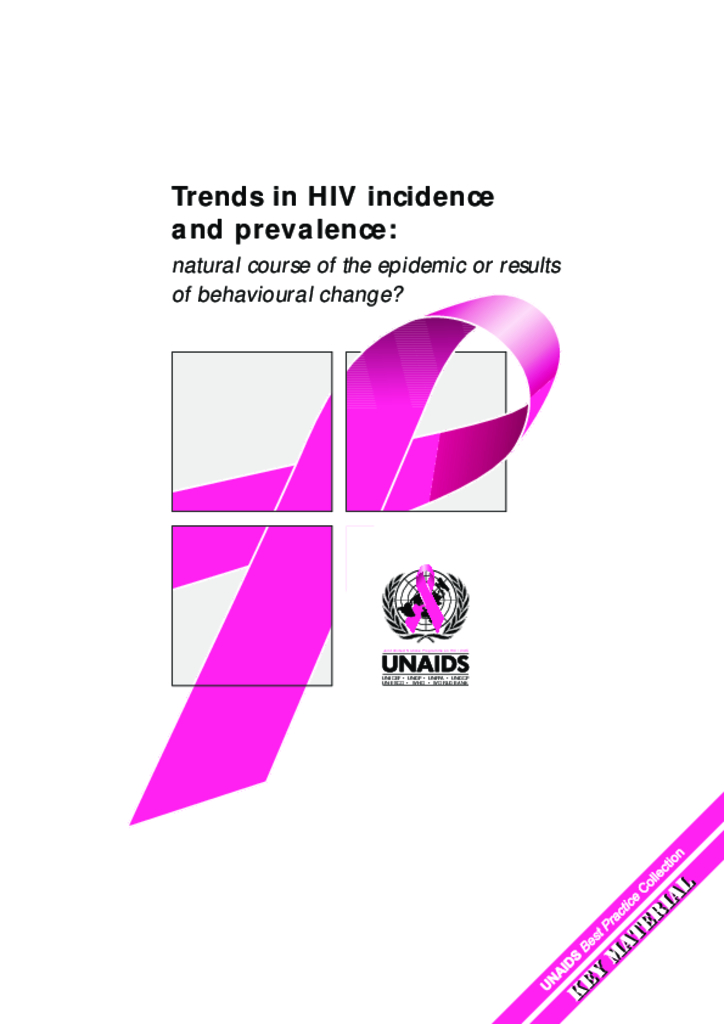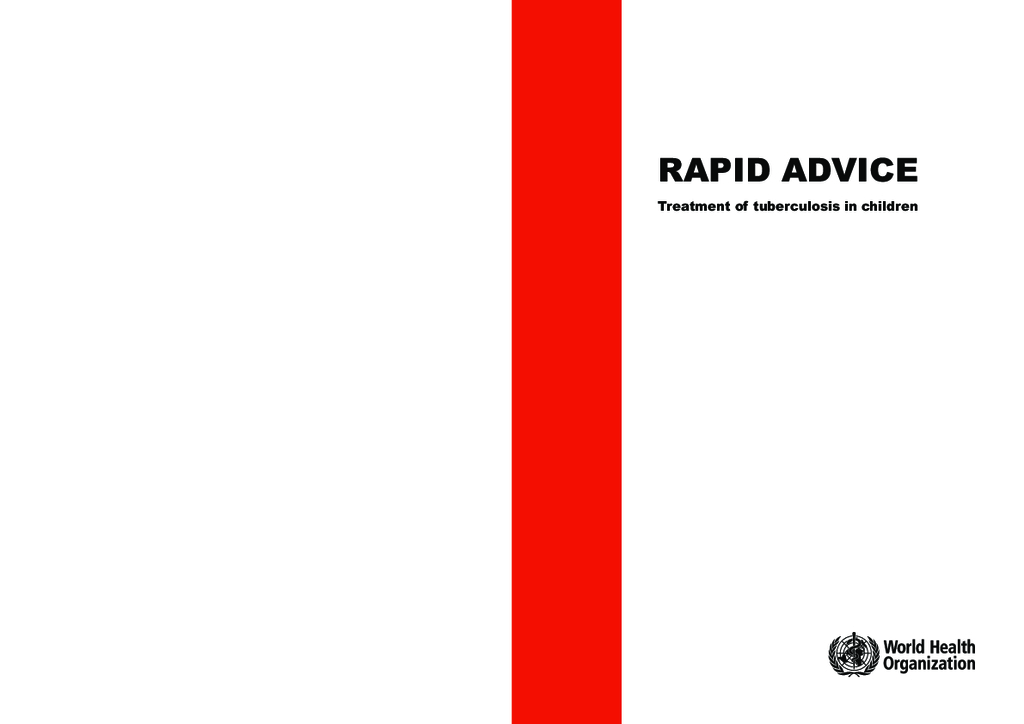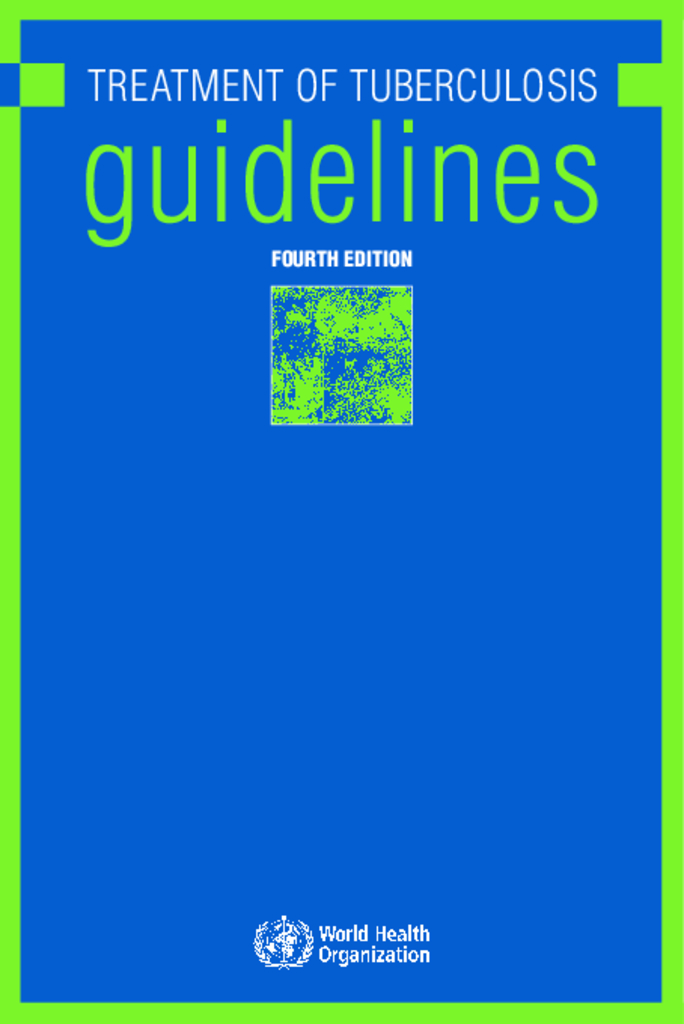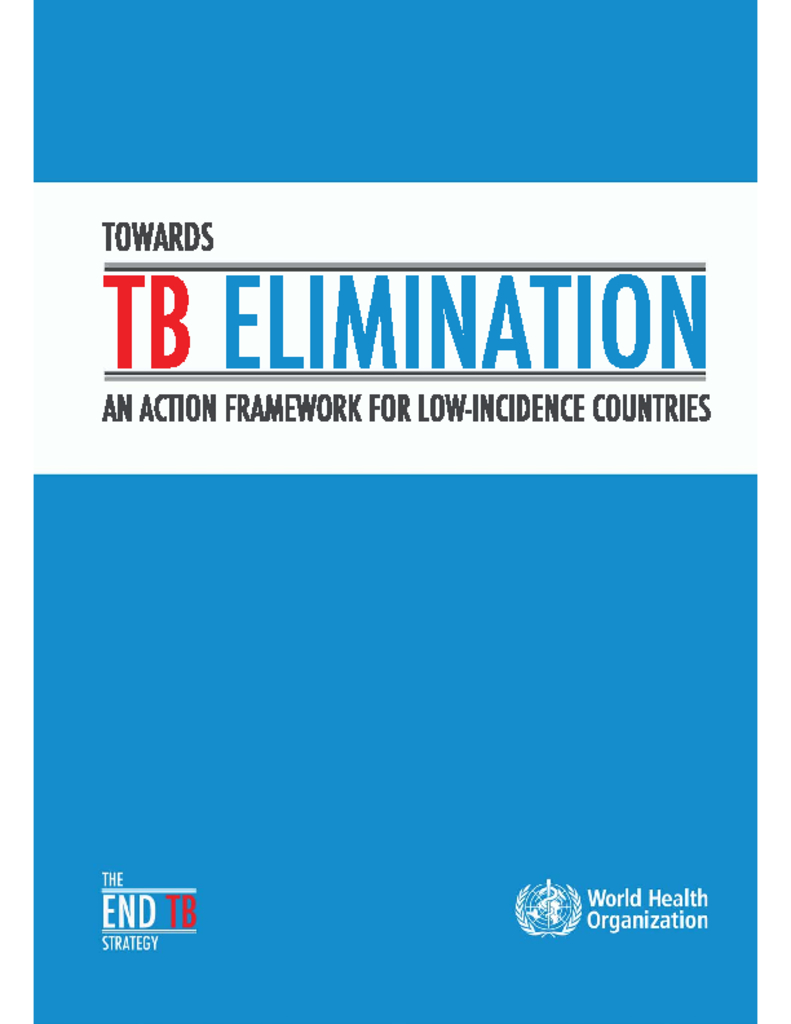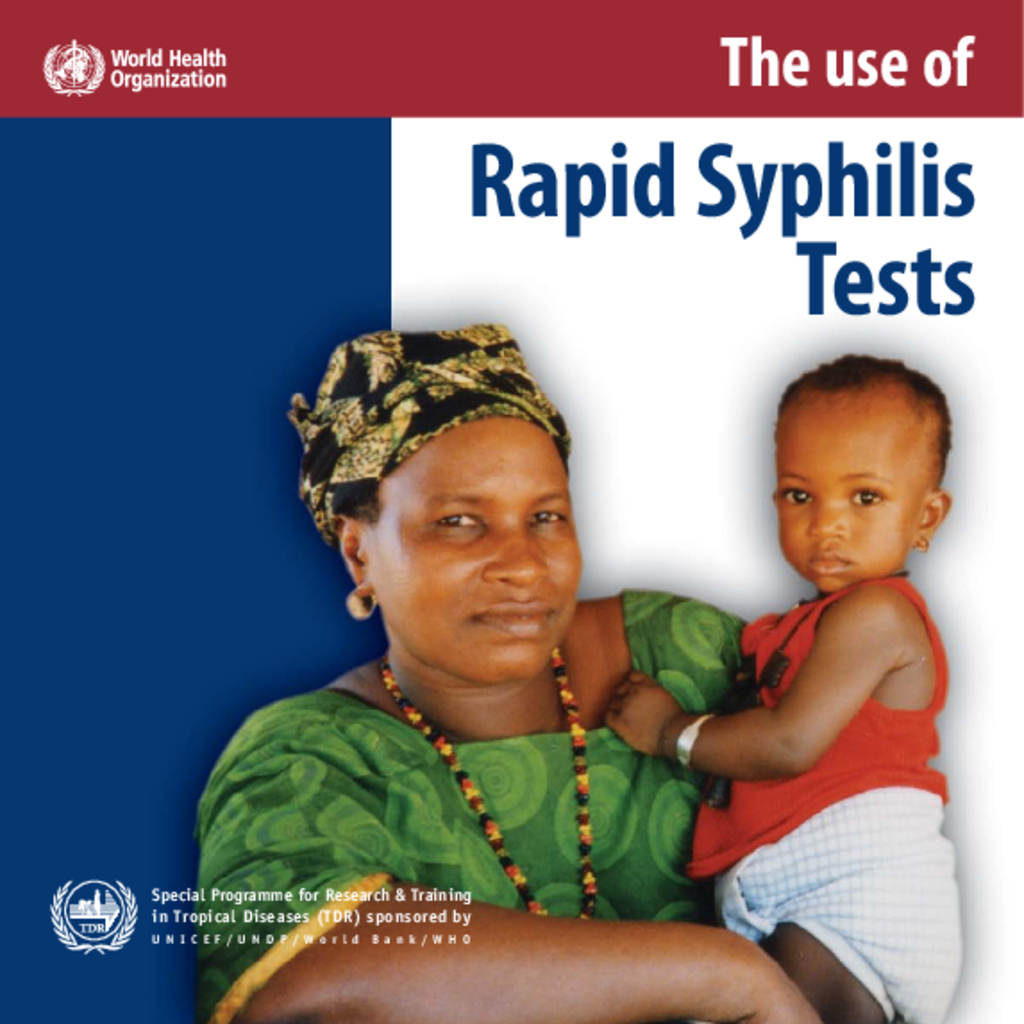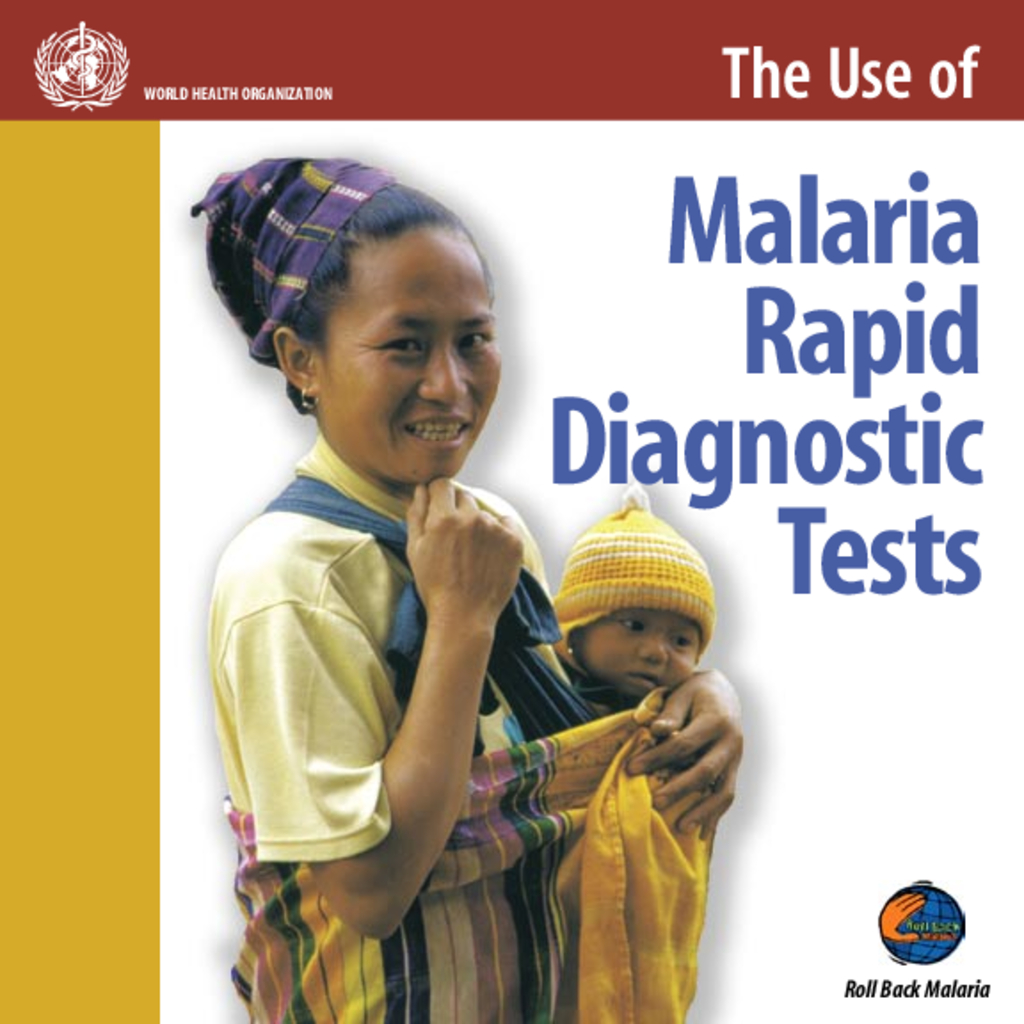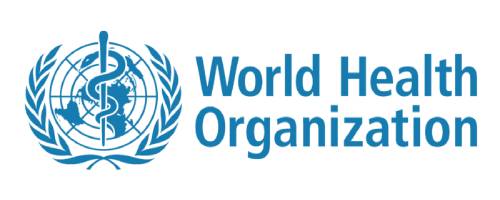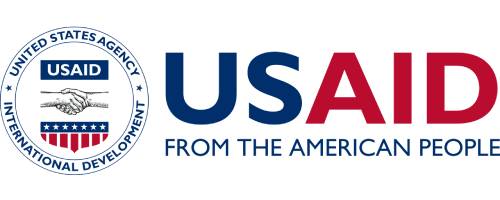This is the 13th issue of the Uganda Ma-laria Quarterly Bulletin that focuses on the first quarter of 2016. The aim of this bulletin is to inform district, national, and global stake-holders on progress achieved and challenges encountered in malaria control in Uganda. Most importantly, it is to encourage use of this information at all levels in order to foster im-provement of our efforts and to highlight achievements and create awareness for in-creased resource mobilization& allocation in or-der to maintain the gains we have achieved
This report presents the Uganda Indoor Residual Spraying (IRS) Project’s progress in the fourth quarter of Year One (period covering July 1st through September 30th 2010). The report outlines the key project activities and achievements in the quarter, the challenges and constraints faced, lessons learned, innovative approaches and recommendations for future implementation.
The revised HTS policy and Implementation guidelines replace the 2010 Uganda HIV Counselling and Testing (HCT) Policy and National Implementation guidelines for HCT, 2010. It is informed by new evidence generated from implementation of HTS at international, regional and national levels as well as lessons and good practices from the East African region. Uganda has adopted the WHO terminology “HIV Testing Services (HTS)” to replace ‘HIV Counselling and Testing (HCT)’in order to incorporate all services aimed at ensuring delivery of high quality HTS.
The 2016 HIV and AIDS Country Progress Report 2016 is an assessment of progress made on the first year (2015/16) of the implementation of the National HIV/AIDS Strategic Pan (NSP), 2015/16 -2019/20). Progress has been assessed according to the four NSP thematic areas of HIV Prevention; Treatment, Care and Support; Social Support and Protection; and Systems Strengthening. The report is divided into six (6) sections. Also documented is the progress registered against the undertakings of the 2014 Joint AIDS Review, as well as, the proposed JAR undertakings for 2015/16.
This is the 10th issue of the Uganda Malaria Quarterly Bulletin that focuses on the second quarter of 2015. The aim of this bulletin is to inform district, national, and global stakeholders on progress achieved and challenges encountered in malaria control in Uganda. Most importantly, it is to encourage use of this information at all levels in order to foster improvement of our efforts and to highlight achievements and create awareness for increased resource mobilization& allocation in order to maintain the gains we have achieved
International travel has become increasingly easy and readily available. Ever greater numbers of people are using international air travel for many reasons including business, tourism, immigration, asylum seeking or humanitarian activities. There is a potential risk of transmission of tuberculosis (TB) and some other airborne or droplet-spread diseases on board commercial aircraft, particularly during long flights. Infections and in some instances outbreaks following exposure during a flight have been documented. Potential exposure to serious infectious diseases on commercial aircraft is of concern for passengers, crew and public health officials.
Both donor agencies funding HIV control programmes, and government agencies trying to bring about changes need to know whether their efforts are having an impact.
The World Health Organization (WHO) first published guidance for national tuberculosis control programmes on managing tuberculosis in children (hereafter called “the Guidance”) in 2006. The Guidance follows the principles of a public health approach aimed at optimizing outcomes, including the quality of life and survival, of children with tuberculosis; it also serves as a reference tool for countries to adopt and adapt according to their national circumstances
Major progress in global tuberculosis (TB) control followed the widespread implementation of the DOTS strategy. The Stop TB Strategy, launched in 2006, builds upon and enhances the achievements of DOTS. New objectives include universal access to patient-centred treatment and protection of populations from TB/HIV and multidrug-resistant TB (MDR-TB). The Stop TB Strategy and the Global Plan to implement the new strategy make it necessary to revise the third edition of Treatment of tuberculosis: guidelines for national programmes, published in 2003.
This Framework offers a coherent approach for eliminating tuberculosis (TB) in low-incidence countries. It is designed to guide national policy-makers and those responsible for technical aspects of the national TB response in accelerating efforts towards elimination. The document will also be informative for public health surveillance officers, practitioners and nongovernmental and civil society partners working on national TB care and prevention and serving the populations most vulnerable to TB.
Syphilis is a curable infection caused by a bacterium called Treponema pallidum. This infection is sexually transmitted, and can also be passed on from a mother to her fetus during pregnancy. As a cause of genital ulcer disease, syphilis has been associated with an increased risk of HIV transmission and acquisition
Malaria rapid diagnostic tests, sometimes called “dipsticks” or “malaria rapid diagnostic devices” (MRDDs), detect specific antigens (proteins) produced by malaria parasites. These antigens are present in the blood of infected or recently infected people. The RDT signifies their presence by a colour change on an absorbing nitrocellulose strip. Some RDTs can detect only one species (Plasmodium falciparum), usually by detecting either histidine-rich protein-2 (HRP2) or parasite-specific lactate dehydrogenase (pLDH). Some detect one or more of the other three species of malaria parasite which infect humans, by detecting various other antigens.
